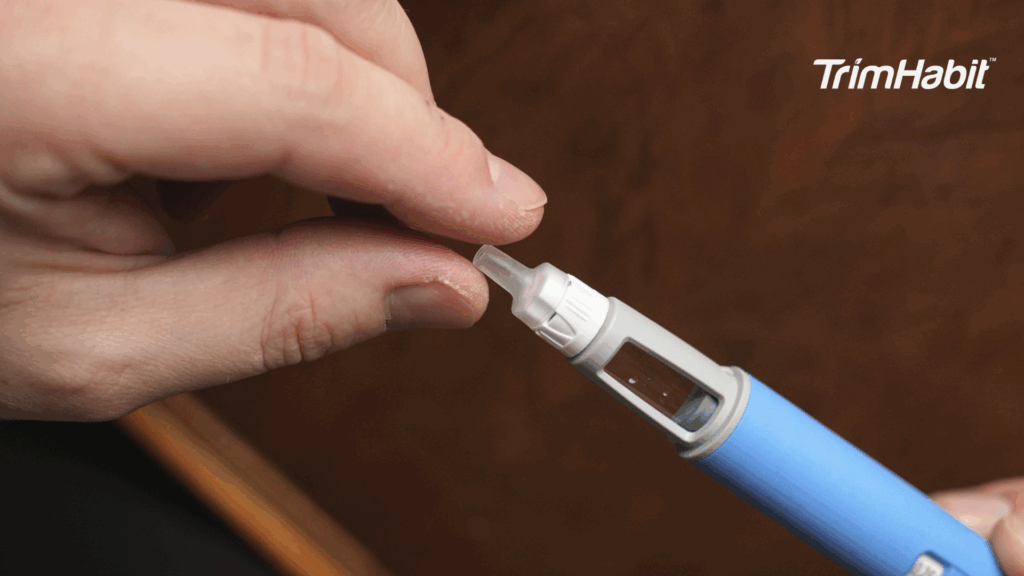When you are on a mission to lose some pounds, occasional hurdles can sometimes make it impossible to achieve. One such roadblock is having sleep apnea.
Losing weight with sleep apnea can be challenging, but it’s crucial for improving both your overall health and managing the symptoms of sleep apnea. Understanding sleep apnea is the first step towards losing weight while dealing with this condition.
Let’s look into some insights to uncover how to lose weight with sleep apnea.
What Is Sleep Apnea?
Sleep apnea is a sleep disorder characterized by pauses in breathing or shallow breaths during sleep. These breathing interruptions can last for a few seconds to a few minutes and may occur many times throughout the night1.
The most common types of sleep apnea are:
- Obstructive Sleep Apnea (OSA): This is the more prevalent form of sleep apnea. It occurs when the muscles in the throat relax excessively during sleep, leading to a partial or complete blockage of the upper airway. When airflow is reduced or blocked, the person may experience snoring or gasping for air, and the brain briefly wakes up to restore normal breathing2.
- Central Sleep Apnea (CSA): This type is less common and is characterized by a failure of the brain to send the appropriate signals to the muscles to initiate breathing. Unlike OSA, there is no physical blockage of the airway in CSA3.
- Complex or Mixed Sleep Apnea: This is a combination of obstructive and central sleep apnea4.
Repeated interruptions in breathing can lead to various symptoms and health issues, including excessive daytime sleepiness, difficulty concentrating, irritability, and an increased risk of cardiovascular problems. Sleep apnea is often associated with other health conditions, too, such as obesity, hypertension, and diabetes5.
Diagnosis of sleep medicine most typically involves a sleep study, which can be conducted in a sleep clinic or at home using portable monitoring devices. Treatment options vary depending on the severity and type of sleep apnea. Still, they may include lifestyle changes, such as weight loss and positional therapy, continuous positive airway pressure (CPAP) devices, and, in some cases, surgery6.
How Weight Affects Sleep Apnea
Excess weight, especially in the form of body fat around the neck and throat area, can significantly contribute to the development and worsening of obstructive sleep apnea (OSA).
Here are several ways in which weight affects obstructive sleep apnea severity:
- Airway Obstruction: Obesity, particularly in the upper body, can accumulate fat deposits around the neck. This excess fat can put pressure on the airway, causing it to become more easily obstructed during sleep. As a result, individuals with excess body weight are more likely to experience interruptions in breathing, characteristic of obstructive sleep apnea7.
- Reduced Muscle Tone: Obesity can be associated with decreased muscle tone, including the muscles that help keep the airway open during sleep. When these muscles are less firm, they are more prone to collapse, contributing to airway obstruction8.
- Inflammation and Fluid Retention: Adipose tissue (fat cells) can produce inflammatory substances, and obesity is often linked to increased inflammation in the body. Inflammation in the throat and airway can exacerbate the symptoms of sleep apnea. Additionally, excess weight can lead to fluid retention, which may further contribute to airway narrowing9.
- Increased Risk: Research consistently shows a strong association between obesity and the risk of developing sleep apnea. Weight loss has been shown to improve sleep apnea symptoms; conversely, weight gain can worsen the condition10.
Health Effects Of Sleep Apnea And Excess Weight
Sleep apnea and excess weight can have significant and interconnected health effects, impacting various aspects of physical and mental well-being.
Here are some of the health effects associated with sleep apnea and excess weight:
- Cardiovascular Issues: Both sleep apnea and excess weight are independently linked to an increased risk of cardiovascular problems. Sleep apnea can lead to high blood pressure, irregular heartbeats (arrhythmias), and an elevated risk of heart disease. Excess weight is also a risk factor for hypertension and cardiovascular diseases, and the combination of sleep apnea and obesity can further amplify these risks11.
- Type 2 Diabetes: Obesity is a significant risk factor for the development of type 2 diabetes. Sleep apnea, particularly untreated or severe cases, is associated with insulin resistance, which is a precursor to diabetes. The combination of sleep apnea and excess weight can contribute to the progression of diabetes12.
- Daytime Sleepiness and Impaired Cognitive Function: Sleep apnea can lead to fragmented sleep, resulting in daytime sleepiness and impaired cognitive function. Excess weight, mainly associated with poor sleep quality, can exacerbate these symptoms, affecting concentration, memory, and overall cognitive performance13.
- Mood Disorders: Both conditions have been linked to mood disorders such as depression and anxiety. Disrupted sleep patterns, hormonal imbalances, and the impact on neurotransmitters may contribute to the development or worsening of mood disorders14.
- Quality of Life: Sleep apnea and excess weight can significantly reduce an individual’s overall quality of life. Fatigue, daytime sleepiness, and the physical limitations associated with obesity can negatively impact daily activities, work performance, and interpersonal relationships15.
- Respiratory Issues: Sleep apnea involves the periodic interruption of breathing, which can strain the respiratory system. Excess weight, mainly when concentrated around the chest and abdomen, can further impede normal respiratory function and increase the risk of respiratory issues16.
- Liver Disease: Non-alcoholic fatty liver disease (NAFLD) is associated with obesity, and sleep apnea may contribute to the progression of liver disease. The combination of sleep apnea and excess weight can exacerbate liver-related health issues17.
- Increased Risk of Stroke: Individuals with sleep apnea and excess weight may face an elevated risk of stroke. The cardiovascular strain associated with both conditions can contribute to the development of cerebrovascular issues18.
How To Lose Weight With Sleep Apnea
Weight loss can often improve sleep apnea symptoms and overall health. Here are some tips for losing weight with sleep apnea:
Consult with Healthcare Professionals
Before starting any weight loss plan, it’s essential to consult with your healthcare team, including a doctor and possibly a registered dietitian. They can provide personalized advice based on your specific health needs and conditions.
Healthy Diet
Focus on a balanced and nutritious diet that includes a variety of fruits, vegetables, lean proteins, and whole grains. Limit the intake of processed foods, sugary drinks, and high-fat items19.
Portion Control
Be mindful of portion sizes. Using smaller plates can help you control your portions and prevent overeating.
Regular Exercise
Engage in regular physical activity. Exercise contributes to weight loss and can improve sleep quality and reduce sleep apnea symptoms. Aim for aerobic workouts (walking or swimming) and strength training20.
Gradual Changes
Make gradual changes to your lifestyle rather than attempting drastic and unsustainable measures. Small, sustainable changes are more likely to lead to long-term success.
Stay Hydrated
Drink plenty of water throughout the day. Sometimes, thirst can be mistaken for hunger, leading to unnecessary snacking21.
Prioritize Sleep
Ensure you are getting sufficient, high-quality sleep. Establish a consistent sleep routine, create a comfortable sleep environment, and address any issues disrupting sleep.
Behavioral Changes
Identify and address any emotional or stress-related factors contributing to unhealthy eating habits. Stress management techniques, such as meditation or yoga, can be beneficial.
Support System
Seek support from friends, family, or a weight loss group. Having a support system can provide encouragement and accountability.
Track Progress
Keep a food journal or use a mobile app to track your meals, exercise, and progress. Monitoring your habits can help you stay on track and identify areas for improvement.
Wrap-up: Losing Weight And Sleep Apnea
1. Can Losing Weight Cure Sleep Apnea?
Losing weight can alleviate sleep apnea by reducing fat deposits, particularly around the neck, preventing airway obstruction during sleep. Beyond addressing the physical obstruction, weight loss plays a vital role in enhancing overall health. It tackles factors like inflammation, hormonal balance, and metabolic function, all of which can contribute to sleep apnea.
While it may not guarantee a complete cure, gradual and sustainable weight loss, guided by healthcare professionals, has shown to significantly reduce symptom severity and, in some cases, resolve the condition. It’s crucial for individuals with sleep apnea to continue monitoring and managing their condition alongside their weight loss journey.
2. Will Treating Sleep Apnea Help You Lose Weight?
Treating sleep apnea can play a role in facilitating weight loss through various indirect mechanisms. Successful management of sleep apnea, often involving therapies like continuous positive airway pressure (CPAP), can enhance sleep quality and alleviate symptoms such as daytime sleepiness. This improvement in sleep can translate to increased daytime energy levels, making individuals more inclined to engage in physical activities and exercise, which are integral to weight-loss treatment and management.
Moreover, treating sleep apnea may positively influence hormonal balance, including hormones related to appetite and metabolism. By addressing sleep-related disruptions in these hormonal pathways, individuals may experience reduced cravings for high-calorie foods, making it easier to maintain a healthier diet. Effective sleep apnea treatment can contribute to a more energetic and health-conscious lifestyle, potentially supporting weight loss efforts.









